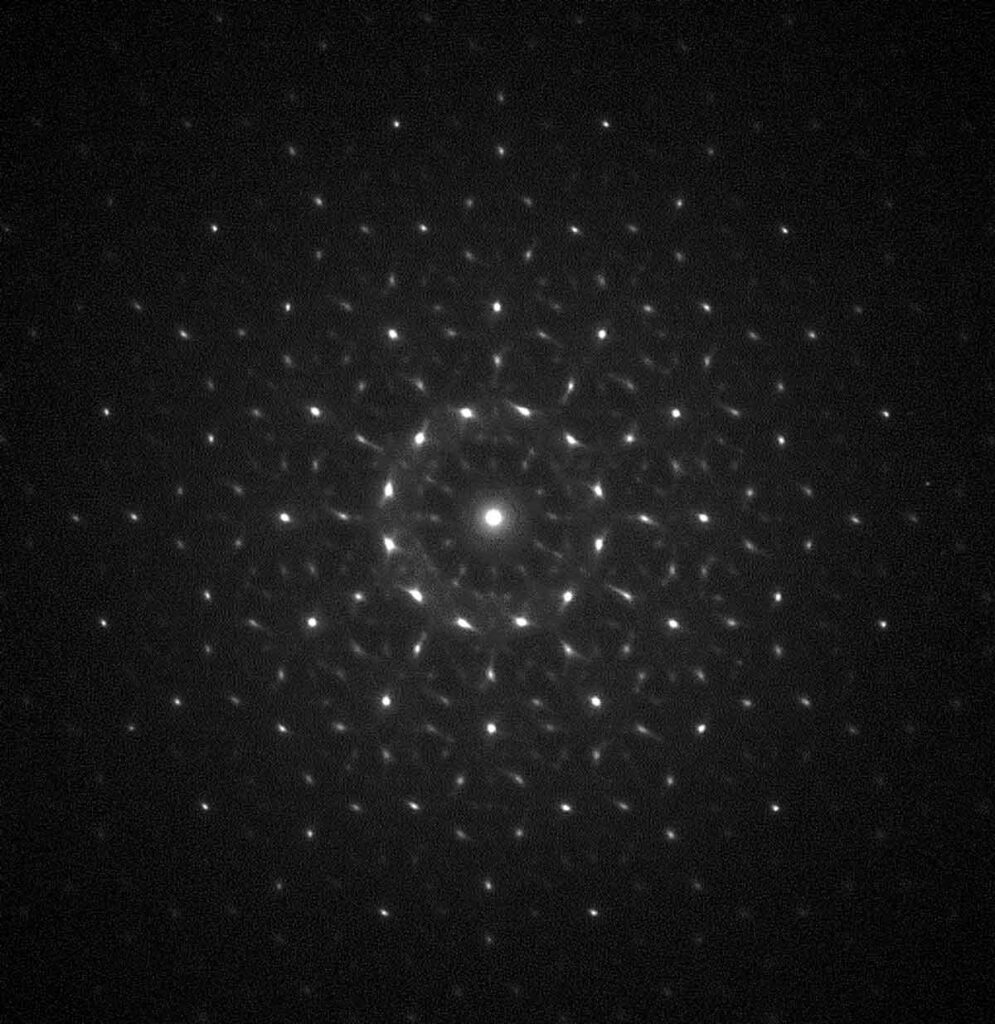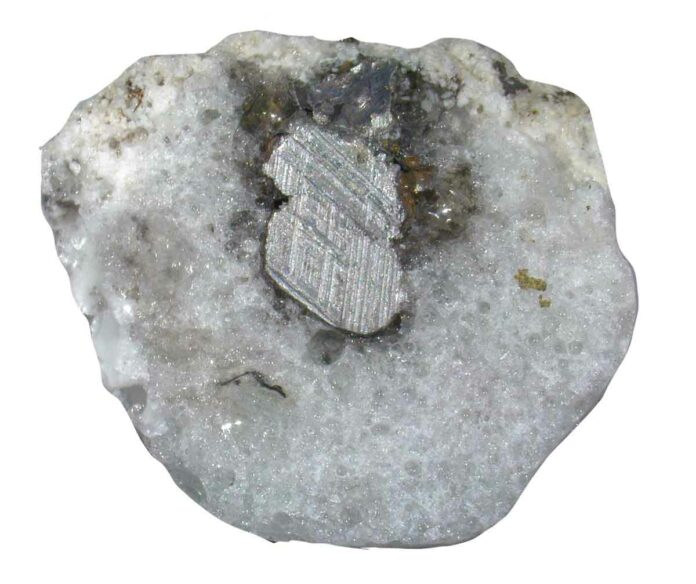A team of researchers from the Università di Firenze, the University of South Florida, the California Institute of Technology and Princeton University have discovered the formation of a quasicrystal during an accidental electrical discharge.
The group has described their study of a quasicrystal discovered in a sand dune in Nebraska. The paper was published in Proceedings of the National Academy of Sciences.
Quasicrystals are crystal-like substances. They have characteristics that ordinary crystals do not have. They have a non-repeating atom arrangement. Quasicrystals have been discovered embedded in meteorites and nuclear blast debris. The researchers found one embedded in a sand dune in Sand Hills, Nebraska.
The quasicrystal was discovered to have 12-fold. This is unusual in quasicrystals. The researchers conducted some research to determine how it formed and how it ended up in the sand dune. A power line had fallen on the dune. It is most likely a result of a lightning strike. They believe an electrical surge from either a power line or lightning created the quasicrystal.
The quasicrystal was discovered inside a tubular piece of fulgurite. This, the researchers believe was also formed during the electrical surge caused by the fusing of melted sand and metal from the power line.

The researchers could determine the composition of the quasicrystal by using an electron microscope to examine it. They discovered bits of silicon dioxide glass while doing so. It indicated that temperatures inside the sand dune during the electrical discharge had to have reached at least 1,710 degrees Celsius. They also discovered that the quasicrystal was recovered from a transition zone between melted aluminum alloy and silicate glass. Their findings confirmed that the object under investigation was a quasicrystal with a previously unknown composition.
The researchers conclude that finding a quasicrystal in such a location implies that there are likely others out there. They also suggested that their research could lead to techniques for producing quasicrystals in the lab.
More information: Luca Bindi et al, Electrical discharge triggers quasicrystal formation in an eolian dune, Proceedings of the National Academy of Sciences (2022). DOI: 10.1073/pnas.2215484119

